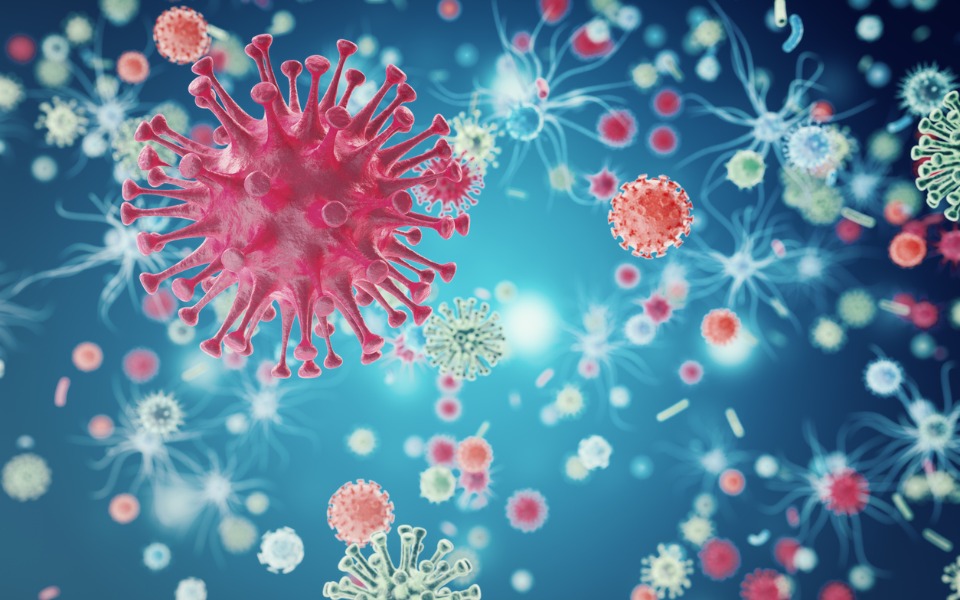
New study could help fight bacterial infections without antibiotics

Although many potent antibiotics are available in the market, our indiscriminate use has rendered them useless in treating several common bacterial infections. The bacteria have mutated and developed smart techniques to beat the effect of the drugs. Scientists are now actively researching alternative methods to combat drug-resistant bacterial strains, one among them being the nanotechnology-based approach.
Researchers at the Institute of Nanoscience and Technology (INST), Mohali, have found a novel way to treat drug-resistant bacterial infections: By inducing self-destruction in the bacteria.
A chance discovery
This new treatment method came stemmed from a discovery they stumbled upon. They found that some highly infectious bacteria synthesise magnetic nanoparticles in their cells. “Taking advantage of this property, we agitated the nanoparticles with an alternating magnetic field to generate hyperthermia (excess heat) in the bacteria,” Prof Deepa Ghosh, principal investigator of the study, told India Science Wire. The study results indicate that the induced heat destroyed 70-80 per cent of the bacteria, reducing the infection.
Also read: How scientists propose to fight drug-resistant bacteria, give antibiotics a miss
Just like humans and other animals, bacteria too require iron and zinc for their growth and development. Infectious bacteria get the supply from the host body. The host immune system prevents the invading bacteria from gaining access to these metals through ‘nutritional immunity’ — that is, by binding these metals to specific proteins or storing them in specialised compartments so that the bacteria cannot access these metals.
However, infection-causing bacteria have developed strategies to acquire these metals from other sources in the body. For example, they release proteins called siderophores that latch to haemoglobin in our blood, scoop the iron from haemoglobin, and store the surplus metals for future use.
Prof Ghosh’s team researched several drug-resistant virulent bacterial strains such as S. aureus, E. coli, P. aeruginosa, A. baumannii, K. pneumoniae, to name a few, obtained from infected patients. During their laboratory experiments, they were surprised to notice that these bacteria stored iron and zinc in tiny, 10-20-nanometre sized magnetic particles inside their cell, which was unknown previously.
“Such biosynthesis of magnetic nanoparticles is seen only in aquatic bacteria called magnetotactic bacteria, which they use as a magnetic compass to navigate the waters,” said Prof Ghosh.
Further experiments concluded that the infectious bacteria nanoparticles were zinc ferrites with magnetic properties and were attracted to an external magnet.
Using an external magnetic field
From their earlier research on cancer cells, Prof Ghosh’s team observed that cancer cells also form magnetic nanoparticles from zinc and iron. These cancer cells could be destroyed by inducing hyperthermia by exposing the cells to an external alternating magnetic field.
“We wanted to see if we could induce a similar response in the bacteria by agitating their internally synthesised nanoparticles,” said Prof Ghosh.
They characterised the bacterial nanoparticles and confirmed their magnetic properties using advanced instruments. When the bacteria were exposed to an alternating magnetic field, they observed a rapid rise in the temperature, which confirmed that the nanoparticles could produce heat. The external magnetic field was causing the nanoparticles to move back and forth following the external alternating magnetic field, creating an energy loss which dissipated as heat. The heat raised the temperature of the surrounding medium by almost 4-5 degrees centigrade. “When translated within the bacterial cell’s microenvironment, the temperature rise is high enough to destroy them,” explained Prof Ghosh.
Also read: Disease-causing microbes are killing people and antibiotics aren’t helping
Encouraged by the results, the team repeated their experiments with clinical samples of infected tissue containing bacteria known to be resistant to the new generation antibiotics such as Ciprofloxacin, Cefotaxime, Amikacin, Imipenem, and Meropenem. They exposed the infected tissue to 30-minutes of a magnetic field of 347 kHz (a harmless range for humans). They found that it induced sufficient heat that killed 70-80 per cent of the bacteria.
Opening new avenues
The favourable outcome corroborated their results that the bacteria in the samples were exhibiting significant susceptibility to the magnetic field. “Our study opens new avenues to treat bacterial infections without antibiotics,” said Prof Ghosh. The team is scaling up their research to treat bone infections where deeper penetration of the magnetic field is required. For now, they have patented their method and are exploring prototypes for treating diabetic foot wounds.
The team comprised Swati Kaushik, Jijo Thomas, Vineeta Panwar, Preethi Murugesan, Vianni Chopra, Navita Salaria, Rupali Singh, Himadri Shekar Roy, Rajesh Kumar, Vikas Gautam, and Deepa Ghosh. The results were published in the journal Nanoscale.

